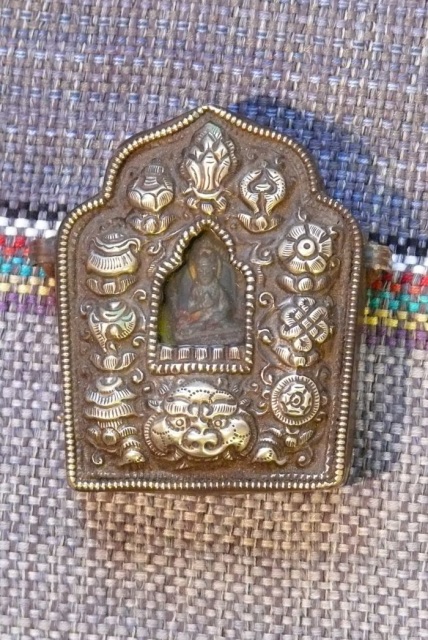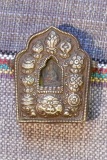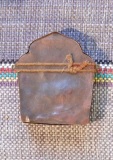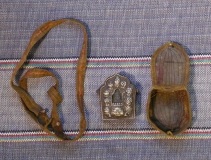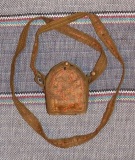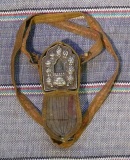Tibetan Amulet Prayer Box
SKU:
CA$125.00
CA$125.00
Unavailable
per item
Authentic 19th/20th century Amulet Prayer Box. From Lake Kokonor region of Qinghai province / Eastern Tibet.
The Tibetan amulet-box, called ga’u , is a torana-shaped metal box with a detachable back made of silver and bronze. The carrying case has a detachable shoulder strap and is made of local fabric quietly embroidered.
The amulet front is decorated with an intricate repousse design of the eight auspicious symbols and Kirtihukha. The center of the ga’u has an aura-shaped opening or window in which a small metal image of a Buddha is displayed. Behind the image, the amulet is packed with a small bag of blessed herbs and special protective charms. The back in secured with a piece of local string.
The ga’u, as a protective amulet, was traditionally worn concealed within the clothing, usually above the heart, and as an object of personal protective power and therefore prone to influences was not to be handled by another person – particularly someone of the opposite sex. In recent times the ga’u has increasingly become a visible article of jewellery and is nowadays commonly worn around the neck on a ribbon, chain or necklace attached to the small handles at its sides.)
The Tibetan amulet-box, called ga’u , is a torana-shaped metal box with a detachable back made of silver and bronze. The carrying case has a detachable shoulder strap and is made of local fabric quietly embroidered.
The amulet front is decorated with an intricate repousse design of the eight auspicious symbols and Kirtihukha. The center of the ga’u has an aura-shaped opening or window in which a small metal image of a Buddha is displayed. Behind the image, the amulet is packed with a small bag of blessed herbs and special protective charms. The back in secured with a piece of local string.
The ga’u, as a protective amulet, was traditionally worn concealed within the clothing, usually above the heart, and as an object of personal protective power and therefore prone to influences was not to be handled by another person – particularly someone of the opposite sex. In recent times the ga’u has increasingly become a visible article of jewellery and is nowadays commonly worn around the neck on a ribbon, chain or necklace attached to the small handles at its sides.)
